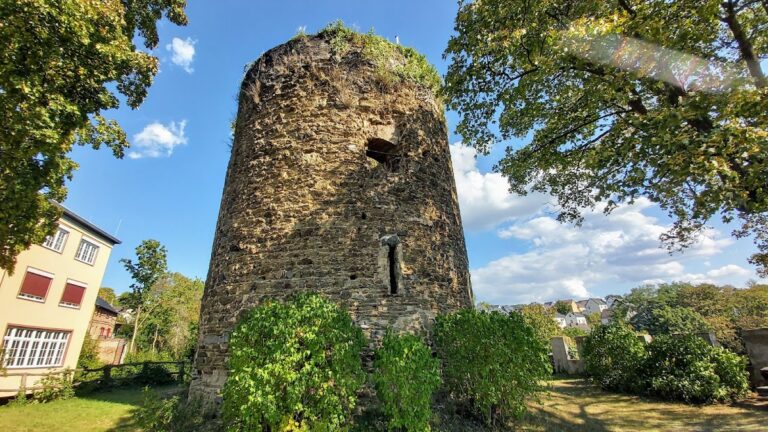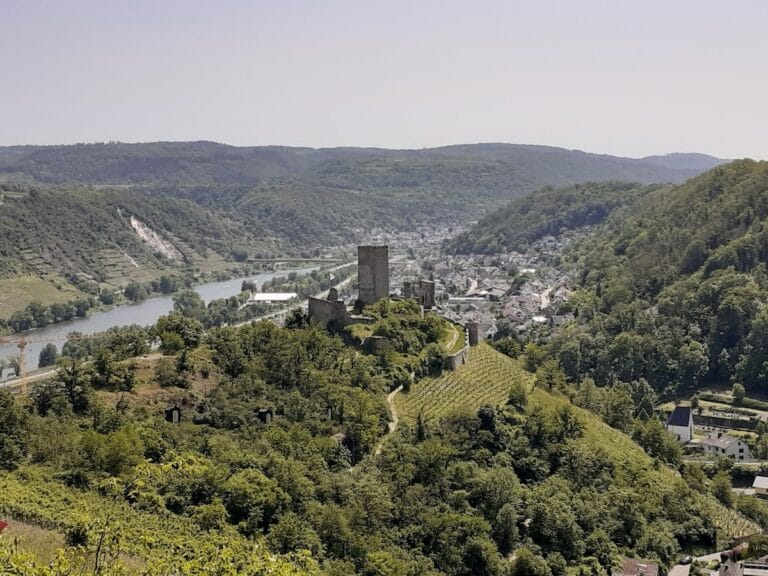Burg Hammerstein: A Medieval Castle in Germany
Visitor Information
Google Rating: 4.4
Popularity: Low
Google Maps: View on Google Maps
Country: Germany
Civilization: Unclassified
Remains: Military
History
Burg Hammerstein is a medieval castle located in the municipality of Hammerstein in present-day Germany. Its origins trace back to the 10th century when it was built by the Conradine dynasty, making it the oldest known castle in the Middle Rhine Valley. Initially, Burg Hammerstein functioned as an imperial castle, known in German as a Reichsburg, and was first mentioned in records around the year 1000.
The castle served as the home and seat of the burgraves of Hammerstein until roughly 1417, when the family’s recorded lineage comes to an end. One of the most dramatic events in Burg Hammerstein’s early history involved Otto von Hammerstein, Count of Engersgau. He entered into a marriage with his distant relative Ermengarde de Verdun that was not accepted by the Church. This dispute led to conflicts with ecclesiastical and imperial authorities, notably Archbishop Erkanbald of Mainz and Emperor Henry II. In 1018, Otto took the drastic step of capturing the archbishop’s entourage and holding them prisoner within the castle walls.
This incident provoked a siege by Emperor Henry II in the autumn of 1020. The castle held out until December 26, when it surrendered due to starvation. Following this siege, Burg Hammerstein fell into a period of decline and disrepair. Later, in 1071, Emperor Henry IV undertook restoration work on the castle. He used it as a secure storage site for the Imperial regalia, the symbols of the Holy Roman Emperor’s authority. His son, Henry V, also deposited the regalia at the castle after he seized power from his father in 1125.
For several centuries thereafter, Burg Hammerstein retained its status as an imperial castle. However, in 1374, Emperor Charles IV transferred the feudal rights over the castle and its surrounding lands to the Electorate of Trier, marking a change in its governance. By 1431, Archbishop Raban von Helmstatt granted the castle and the valley it overlooked to Count Ruprecht of Virneburg. Ruprecht was authorized three years later to invest a sum of 1,500 florins in constructing additional buildings on the site.
During the turbulent years of the Thirty Years’ War, Burg Hammerstein saw military action and occupation. Spanish forces controlled it from 1632 to 1646. Subsequently, troops loyal to Charles IV, Duke of Lorraine, utilized the castle from 1646 to 1654 as a base for raids in the region. Retaking the castle required considerable effort from forces allied with Trier and Wied. After Trier’s forces withdrew in 1654, the castle was deliberately dismantled, or slighted, to render it unusable for military purposes.
In the aftermath of the Napoleonic Wars, the ruined castle came under Prussian control in 1815. Since 1893, ownership has passed to the Barons of Hammerstein, who continue to hold the site.
Remains
Burg Hammerstein’s ruins occupy a hill positioned 195 meters above sea level on the east bank of the Rhine River. The site’s layout reflects its function as a fortified stronghold overlooking the valley below. The surviving structures are primarily from medieval phases, showing a masonry technique where rubble and small stones were held in place by mortar—a construction style once mistakenly attributed to Roman origins.
Among the remains, a watchtower ruin stands prominently, overlooking the Rhine and indicating the castle’s role in surveillance and defense. Portions of the ring wall, which enclosed and protected the inner castle area, remain visible, along with fragments of the eastern defensive wall walk—a raised passage used by guards for patrol and protection.
A postern gate, or Ausfallpforte—a small, secondary gate intended for sorties or emergencies—also survives in part. Nearby, the castle’s so-called “Barbarossa Wall” contains a loophole, a narrow vertical slit designed to allow defenders to fire arrows or crossbows while remaining protected. This feature underscores the castle’s military design.
A modern reconstruction exists of one of the castle gates, providing an impression of its original entrance. At the base of the rock on which the castle is built, a memorial commemorates the siege of 1020, marking the significant historical event when Emperor Henry II encircled the fortress.
Historically, Burg Hammerstein included a toll station by the year 1071, reflecting its strategic position controlling river traffic. Later, in 1215, it hosted a mint, indicating economic as well as military importance. Today, the castle’s remnants are accessible by trails, connecting visitors to a site rich with the layers of medieval history.










